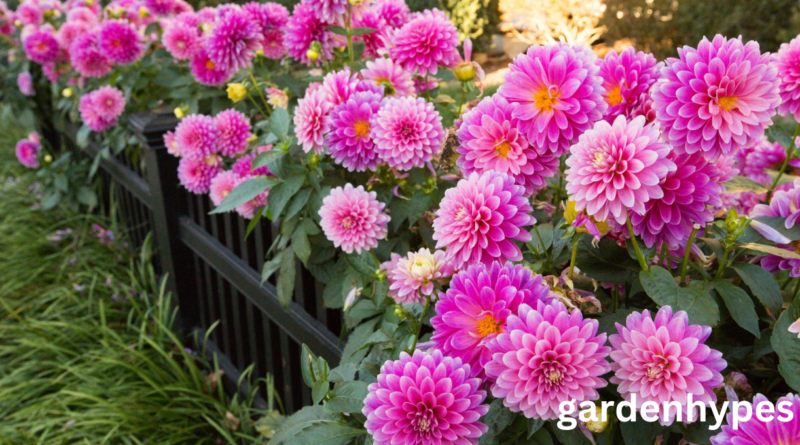Best Perennials That Bloom All Summer for a Colorful Garden
Introduction to Summer-Blooming Perennials
Gardening is one of those hobbies where patience pays off in beautiful ways. While annuals bring quick bursts of color, they come with the hassle of replanting every year. That’s where perennials that bloom all summer step in like dependable friends—returning year after year, filling your garden with vibrant colors, and saving you time, effort, and money. These hardy plants are the backbone of any flower garden because they not only last for years but also offer extended flowering periods that keep your outdoor space looking lively throughout the warm months.
click in link Sand Spurs
When you think about summer-blooming perennials, imagine flowers that don’t just shine for a few weeks but continue to dazzle from early June until late August—or even longer. They’re the plants that make your garden feel alive, attracting pollinators like bees, butterflies, and hummingbirds while also providing beauty that doesn’t fade too quickly. Whether you’re a seasoned gardener or just starting out, learning which perennials bloom all summer and how to care for them can make your gardening journey much more rewarding.
Why Choose Perennials Over Annuals?
If you’ve been planting annuals for years, you might be wondering: why make the switch? The difference is simple yet significant. Annuals live fast and die young—they sprout, bloom, seed, and die within one season. Perennials, on the other hand, are marathon runners in the garden world. Once planted, they grow back year after year, often stronger and fuller than before.
Here are a few solid reasons to choose perennials over annuals:
- Cost-effective: Instead of buying new flowers every spring, you plant once and enjoy them for years.
- Low maintenance: Many perennials require minimal upkeep once established, making them perfect for busy gardeners.
- Long-lasting color: Especially when you choose varieties that bloom all summer, you’ll enjoy months of vibrant displays.
- Eco-friendly: By staying in the soil year after year, perennials help reduce waste from replanting and provide stable habitats for pollinators.
Think of it this way: annuals are like renting an apartment—you get beauty for a short time but need to keep paying. Perennials are like owning your home—you invest once and enjoy it for years.
Benefits of Perennials That Bloom All Summer
Now, not all perennials bloom throughout the summer. Some may flower only in spring or fall. But when you pick the right ones, you’re rewarded with a steady stream of blossoms during the hottest months. Here’s why summer-blooming perennials are especially valuable:
- Continuous garden color – Instead of dull gaps between blooms, these perennials keep your garden vibrant all season.
- Pollinator-friendly – Many summer-blooming perennials attract bees, butterflies, and even hummingbirds, supporting biodiversity in your yard.
- Weather resilience – They’re often hardy enough to handle heat, humidity, and even drought, depending on the variety.
- Landscape structure – Beyond flowers, many perennials offer attractive foliage, giving your garden texture and depth.
- Seasonal versatility – By mixing different summer perennials, you can create a garden that evolves in color and interest from early summer to late autumn.
So, if you dream of a garden that looks like a living painting—full of colors, textures, and life—you’ll definitely want to consider perennials that bloom all summer.
How to Choose the Right Perennials for Your Garden
Planting perennials isn’t a one-size-fits-all solution. Choosing the right plants for your garden depends on several factors—climate, soil, sunlight, and how much effort you’re willing to put into maintenance. Get these things right from the start, and you’ll set yourself up for years of blooming success.
Considering Climate and Hardiness Zones
The first step in choosing perennials is understanding your USDA hardiness zone or equivalent for your region. These zones are based on average minimum winter temperatures and help determine which plants can survive in your area. For example:
- Zone 3 (very cold winters): Stick with tough perennials like daylilies and Russian sage.
- Zone 7-8 (mild winters): You have more flexibility and can grow lavender, salvia, and garden phlox with ease.
- Zone 9-10 (warm climates): Heat-tolerant perennials like catmint and coreopsis thrive here.
Picking plants outside of your hardiness zone often leads to disappointment—plants may look good for one season but fail to return the next.
Sunlight and Soil Requirements
Another key factor is sunlight. Most summer-blooming perennials are sun lovers, meaning they need 6–8 hours of direct sunlight daily. However, if your garden has partial shade, don’t worry—you can still grow perennials like certain types of phlox and daylilies that adapt well.
Soil quality is just as important. Perennials prefer well-draining soil since soggy roots are a recipe for disaster. If your soil is heavy clay, consider amending it with compost or sand. On the flip side, sandy soils may need organic matter to hold onto nutrients and moisture.
Low-Maintenance vs. High-Maintenance Options
Your gardening style also matters. Do you want a low-maintenance garden that thrives with little fuss, or are you someone who enjoys hands-on care? Some perennials like coneflowers and black-eyed Susans are nearly indestructible, making them great for beginners. Others, like phlox, may need a little extra attention to prevent mildew and keep them blooming strong.
A good strategy is to mix both types. Plant mostly low-maintenance perennials as your foundation, then sprinkle in a few high-maintenance showstoppers for variety. That way, your garden looks rich without demanding too much of your time.
Top 5 Perennials That Bloom All Summer
Alright, let’s get to the exciting part—the plants themselves! Below are 10 perennials that bloom all summer and keep your garden bursting with life from June through August (and sometimes beyond).
1. Coneflowers (Echinacea)
Coneflowers are the rockstars of the summer garden. Known for their bold daisy-like blooms and raised centers, they bring vibrant shades of purple, pink, white, and even orange to your flower beds. Not only do they bloom for months, but they’re also tough as nails—handling heat, drought, and poor soil like champs.
click in link Sand Spurs
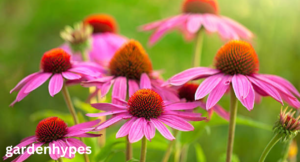
Why they’re a must-have:
- Attract bees, butterflies, and songbirds.
- Require little care once established.
- Drought-tolerant and perfect for low-water gardens.
2. Black-Eyed Susan (Rudbeckia)
Black-eyed Susans are cheerful, bright yellow perennials with dark centers that scream summer sunshine. These flowers thrive in just about any soil and bring a wildflower feel to your yard.
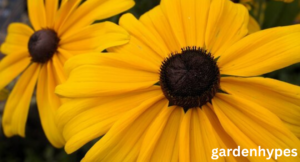
Why they’re great:
- Extremely hardy and low-maintenance.
- Provide blooms from midsummer into early fall.
- Attract pollinators and even birds that feed on their seeds.
3. Daylilies (Hemerocallis)
Daylilies are a gardener’s best friend. Each bloom lasts only one day (hence the name), but the plants produce so many flowers that they seem to bloom endlessly all summer long. Available in nearly every color, they’re great for adding variety.
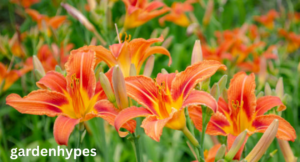
Highlights:
- Adaptable to many soil types.
- Easy to grow and multiply quickly.
- Perfect for borders, slopes, and mass plantings.
4. Coreopsis (Tickseed)
Coreopsis, often called tickseed, offers sunny yellow, orange, or bi-colored blooms that keep coming all summer. These plants are known for their airy, delicate look and thrive in full sun.
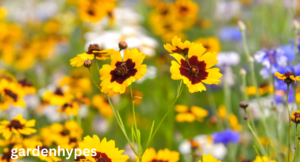
Benefits:
- Long bloom season, often into fall.
- Low maintenance and drought-tolerant.
- Great for both formal gardens and wildflower meadows.
5. Shasta Daisies (Leucanthemum)
If you love the classic daisy look, Shasta daisies are a must. Their crisp white petals with sunny yellow centers make them stand out in any garden, and they bloom reliably all summer long.
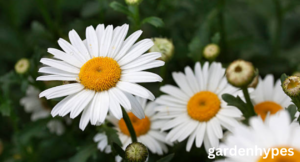
Why plant them:
- Add a timeless, cheerful look to gardens.
- Easy to grow and require little care.
- Excellent for cutting gardens and floral arrangements.
click in link Sand Spurs
faqs
- What perennial flowers bloom the longest?
Some of the longest-blooming perennials include coneflowers, black-eyed Susans, coreopsis, and daylilies. These plants start flowering in early to mid-summer and often keep blooming into fall with proper care. - Can I grow summer-blooming perennials in containers?
Yes, many perennials thrive in containers. Options like lavender, salvia, and dwarf varieties of coneflowers or daylilies do especially well in pots. Just make sure the container has good drainage and provide regular watering. - Which perennials require the least maintenance?
If you want easy-care plants, go for catmint, black-eyed Susans, Russian sage, or Shasta daisies. These are hardy, drought-tolerant, and don’t require much pruning or fertilizing once established. - How do I extend the blooming period of my perennials?
The secret is deadheading (removing spent flowers), regular watering, and occasional feeding with a balanced fertilizer. Some perennials, like phlox or salvia, will even give you a second flush of blooms if pruned mid-season. - What’s the difference between perennials and biennials?
- Perennials come back year after year, often blooming stronger as they mature.
- Biennials, like foxgloves, take two years to complete their life cycle—growing foliage the first year, blooming the second year, and then dying.
